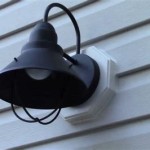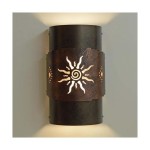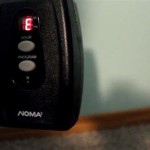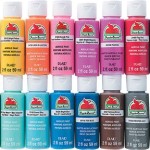How Do You Waterproof a Wooden Table for Outdoor Use?
Wooden tables, with their natural beauty and warmth, can enhance any outdoor space. However, the elements can wreak havoc on untreated wood, causing it to warp, crack, and rot. To ensure your wooden table withstands the test of time, waterproofing is essential. This process involves applying protective coatings that repel water, prevent moisture penetration, and safeguard the wood from damage.
Waterproofing a wooden table is a multi-step process that requires careful preparation and application. The choice of waterproofing method depends on the type of wood, the desired level of protection, and the intended use of the table. Whether you're aiming for a natural finish or a more durable, weather-resistant surface, several techniques can effectively waterproof your outdoor table.
Preparing the Wood for Waterproofing
Before applying any waterproofing agent, it is crucial to properly prepare the wood surface. This involves cleaning, sanding, and filling any cracks or imperfections. A clean surface ensures that the waterproofing agent adheres properly and provides optimal protection.
Begin by removing any dirt, debris, or old coatings with a stiff brush, a damp cloth, or a pressure washer. Use a mild detergent for stubborn stains. Allow the wood to dry completely before proceeding. Next, sand the surface with progressively finer grit sandpaper to create a smooth finish. This step helps create a more receptive surface for the waterproofing agent.
If the table has any cracks or holes, fill them with wood filler or epoxy. Allow the filler to dry completely before sanding it flush with the surrounding wood. This ensures a smooth, even surface that is less susceptible to water penetration.
Choosing the Right Waterproofing Method
Once the wood is prepared, you can select the appropriate waterproofing method based on your needs. Popular options include:
1. Oil-based Finishes
Oil-based finishes, such as teak oil, linseed oil, and tung oil, are known for their natural beauty and ability to penetrate the wood, offering a protective barrier against moisture. They create a rich, warm finish that enhances the wood's natural grain patterns. However, oil-based finishes require regular reapplication, typically every few months or annually, depending on the weather conditions and usage.
2. Polyurethane Finishes
Polyurethane finishes provide a durable, long-lasting protective layer against water, UV rays, and scratches. They are available in both oil-based and water-based formulas. Oil-based polyurethane offers superior durability but takes longer to dry and emits strong fumes. Water-based polyurethane is faster drying, has lower odor, and is environmentally friendly.
3. Varnish Finishes
Varnish finishes, similar to polyurethane, create a hard, protective layer. They offer a high-gloss finish that enhances the wood's appearance. Marine varnish is specifically designed for outdoor use and provides exceptional resistance to moisture, UV damage, and abrasion. Varnish finishes typically require more coats than oil-based finishes, but they offer long-lasting protection.
Applying the Waterproofing Agent
Once you have chosen the appropriate waterproofing method, apply it evenly to the entire surface of the table. Use a brush, roller, or spray gun, depending on the chosen product and your preference. Follow the manufacturer's instructions for drying time and reapplication.
For oil-based finishes, apply thin, even coats, allowing each coat to dry thoroughly before applying the next. For polyurethane and varnish finishes, apply multiple thin coats to ensure complete coverage and maximum durability.
After the final coat has dried, apply a layer of wax or sealant to enhance the protection and enhance the appearance. Wax provides a water-repellent barrier and helps maintain the finish's luster. Sealants offer UV protection and prevent the wood from fading.
Maintaining the Waterproofing
Regular maintenance is crucial to ensure the longevity of your waterproofed wooden table. This includes:
1. Clean the table regularly with a mild detergent and water. Avoid harsh chemicals or abrasive cleaners that can damage the finish. 2. Reapply the waterproofing agent as needed, based on the product's recommendation and the level of wear and tear. 3. Inspect the table for any signs of damage, such as cracks, scratches, or chips. Repair any imperfections promptly to prevent further damage. 4. Store the table indoors during extreme weather conditions, such as heavy rain, snow, or freezing temperatures.
By taking these preventative measures, you can extend the lifespan of your wooden table and enjoy its beauty for years to come.

How To Waterproof Outdoor Furniture The Easy Way Maison De Pax

How To Seal Wood For Outdoor Use Diy

How To Waterproof And Seal An Outdoor Table With Milkoil Miss Mustard Seed S Milk Paint

How To Waterproof And Seal An Outdoor Table With Milkoil Miss Mustard Seed S Milk Paint

How To Waterproof And Seal An Outdoor Table With Milkoil Miss Mustard Seed S Milk Paint

4 Ways To Waterproof Wood Outdoor Furniture Resort Blog

How To Waterproof Wood Outdoor Furniture Craving Some Creativity

How To Treat Wood For Outdoor Use 3 Methods Explained

How To Waterproof And Seal An Outdoor Table With Milkoil Miss Mustard Seed S Milk Paint

How To Waterproof Wood With Oil Sealant Or Stain And Sealer Bob Vila
Related Posts







